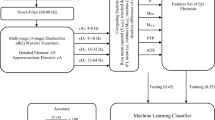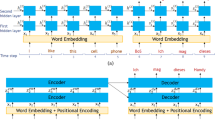Abstract
This paper presents a novel approach for extracting swimming performance parameters from accelerometer data using techniques traditionally applied to audio analysis. The recorded acceleration data is treated as sampled audio data, with the stroke rate (one of the main parameters to extract) treated as the fundamental frequency. A pitch detection algorithm is then adapted to this domain and applied to the data. Lap counts are derived from an analysis of the output frequency series as percussive events, and stroke counts are obtained from a pitch-aligned adaptive spectral extraction algorithm. This approach was compared to conventional accelerometer data analysis techniques (peak detection and zero crossing) and demonstrated superior accuracy compared to a visual observation criterion. For stroke count determination, the new approach had zero error rates of 86.1 % (versus 58.3 % for the zero-crossing method) and 75 % (versus 60 % for peak detection) for lower-back and wrist placement locations, respectively. Additionally, this new approach is not dependent on filtering, and is robust to sensor displacement and axial alignment.












Similar content being viewed by others
References
Bächlin M, Tröster G (2012) Swimming performance and technique evaluation with wearable acceleration sensors. Pervasive Mobile Comput 8(1):68–81
Barber M, Barden J (2014) Effects of breathing on hip roll asymmetry in competitive front crawl swimming. In: Proceedings of the XIIth international symposium on biomechanics and medicine in swimming. Canberra, Australia, pp 84–89
Callaway AJ, Cobb JE, Jones I (2009) A comparison of video and accelerometer based approaches applied to performance monitoring in swimming. Int J Sports Sci Coach 4(1):139–153
Dadashi F, Arami A, Crettenand F, Millet G, Komar J, Seifert L, Aminian K (2013) A hidden markov model of the breaststroke swimming temporal phases using wearable inertial measurement units. In: 10th IEEE body sensor networks conference, IEEE
Davey NP, James DA, Anderson ME (2004) Signal analysis of accelerometry data using gravity-based modeling. In: Microelectronics, MEMS, and nanotechnology, International Society for optics and photonics, pp 362–370
De Cheveigné A, Kawahara H (2002) YIN, a fundamental frequency estimator for speech and music. J Acoust Soc Am 111:1917
De La Cuadra P, Master A, Sapp C (2001) Efficient pitch detection techniques for interactive music. In: Proceedings of the 2001 international computer music conference, pp 403–406
Gerhard D (2003) Pitch extraction and fundamental frequency: history and current techniques. Department of Computer Science, University of Regina, Regina
von dem Knesebeck A, Zölzer U (2010) Comparison of pitch trackers for real-time guitar effects. In: Proceedings of 13th international conference on digital audio effects (DAFx), Graz, pp 266–269
Le Sage T, Bindel A, Conway P, Justham L, Slawson S, West A (2011) Embedded programming and real-time signal processing of swimming strokes. Sports Eng 14(1):1–14
Lee J, Leadbetter R, Ohgi Y, Thiel D, Burkett B, James DA (2011) Quantifying and assessing biomechanical differences in swim turn using wearable sensors. Sports Technol 4(3–4):128–133
Nordsborg NB, Espinosa HG, Thiel DV (2014) Estimating energy expenditure during front crawl swimming using accelerometers. Procedia Eng 72:132–137
Ohgi Y (2002) Microcomputer-based acceleration sensor device for sports biomechanics-stroke evaluation by using swimmer’s wrist acceleration. In: Sensors, 2002. Proceedings of IEEE, IEEE, vol 1, pp 699–704
Ohgi Y, Ichikawa H, Homma M, Miyaji C (2003) Stroke phase discrimination in breaststroke swimming using a tri-axial acceleration sensor device. Sports Eng 6(2):113–123
Press WH (2007) Numerical recipes, 3rd edn. Cambridge University Press, The art of scientific computing
Rabiner L, Schafer R (2011) Theory and applications of digital speech processing. Pearson, London
Rowlands DD, James DA, Lee JB (2014) Visualization of wearable sensor data during swimming for performance analysis. Sports Technol pp 1–7
Scholkmann F, Boss J, Wolf M (2012) An efficient algorithm for automatic peak detection in noisy periodic and quasi-periodic signals. Algorithms 5(4):588–603
Seifert L, Chollet D, Bardy B (2004) Effect of swimming velocity on arm coordination in the front crawl: a dynamic analysis. J Sports Sci 22(7):651–660
Stamm A, James D, Thiel D (2013) Velocity profiling using inertial sensors for freestyle swimming. Sports Eng 16(1):1–11
Thompson KG, MacLaren DP, Lees A, Atkinson G (2004) The effects of changing pace on metabolism and stroke characteristics during high-speed breaststroke swimming. J Sports Sci 22(2):149–157
Wilson BD (2008) Development in video technology for coaching. Sports Technol 1(1):34–40
Winter D (1990) Biomechanics and motor control of human movement. A Wiley-Interscience publication, Wiley
Yang C, He Z, Yu W (2009) Comparison of public peak detection algorithms for MALDI mass spectrometry data analysis. BMC Bioinform 10(1):4
Zhao Y, Gerhard D (2014) Waveform-aligned adaptive windows for spectral component tracking and noise rejection. In: Sound, music, and motion, lecture notes in computer science, vol 8905, Springer International Publishing, pp 463–480
Acknowledgments
The authors would like to thank Swim Saskatchewan for their financial support and GENEActiv for providing the accelerometers used for data collection. The authors would also like to express gratitude to the reviewers for volunteering their time and expertise to the scientific process.
Author information
Authors and Affiliations
Corresponding author
Rights and permissions
About this article
Cite this article
Zhao, Y., Gerhard, D. & Barden, J. Periodicity-based swimming performance feature extraction and parameter estimation. Sports Eng 18, 177–189 (2015). https://doi.org/10.1007/s12283-015-0178-2
Published:
Issue Date:
DOI: https://doi.org/10.1007/s12283-015-0178-2




